#Lui Shou-Kwan 呂壽琨
Photo

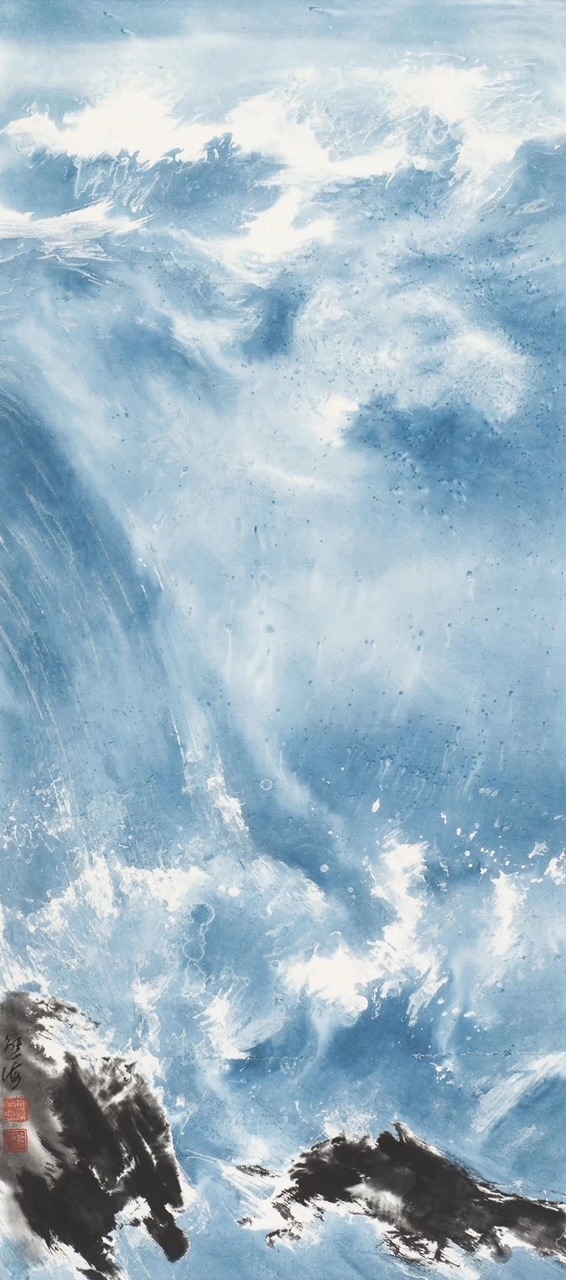
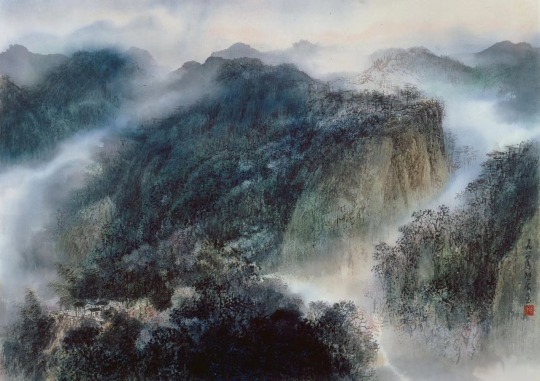
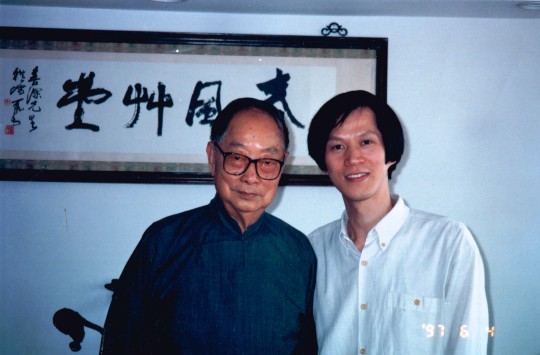

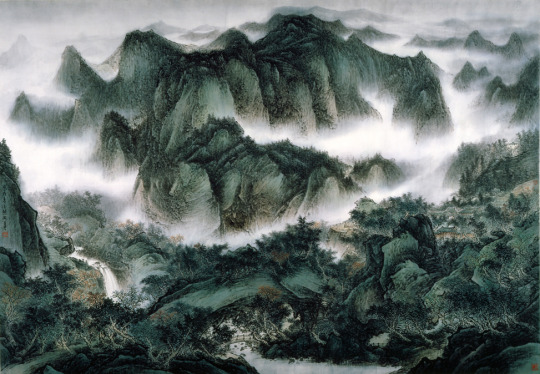

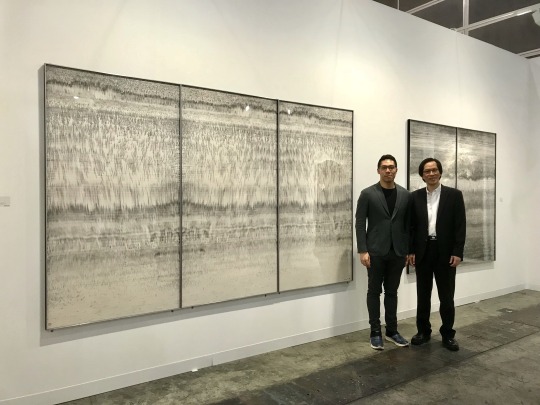
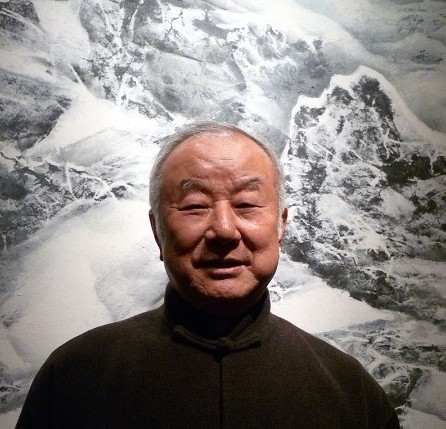
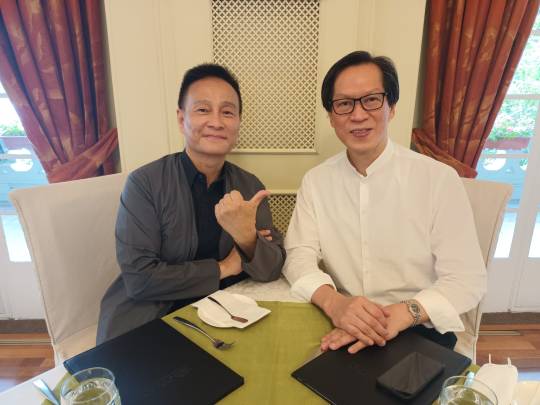
What Is Chinese Ink Painting? Why Are Artist Ink Paintbrushes Soft? What Is The Monumental Success Of ‘New Ink Painting Movement’ In Hong Kong?—Explained By Master Hung Hoi (熊海)
Some people paint what they see. Other people paint what they feel. For the Chinese, painting is a way to express philosophy and literary art such as poems. We see abstract art with our mind, and so perceive what we cannot see physically with our eyes. Abstraction demonstrates an escape route from reality in depicting paradoxically what reality is all about.
Chinese ink painting (水墨畫) is piously about the Nature which can be snow, clouds, mountains, rivers, lakes, trees, flowers, birds or insects. It symbolizes the spiritual and elegant characteristics of Chinese culture. Chinese ink paintbrushes are soft, contrary to the hard brushes in the West. They coincide with the gentle character of the Chinese and can facilitate an abstruse inquiry into philosophical notions loved by the Chinese artists and such notions are usually used to explain things in life. Artists express one-self through these objects without caring about the exact details of reality. It uses traditionally only black ink (later, colour ink is used by some) as an artistic language, together with shapes, lines, forms and symbolic marks to create a beauty in harmony with what is a break-through freedom from the visual constraints of real life. The inseparable spiritual trinity of a Chinese scholar lies in his ink images, poem and calligraphy (書法) appearing on a romantic sheet of silk or rice paper (宣紙).
Master Hung Hoi (熊海) is my favourite ink painter in Hong Kong. I love his willingness to try different styles and readiness to teach us what he has learnt. He shares with me his artistic journey and views.
Master Hung, “The classical style of Chinese ink painting flourished in the Tang Dynasty, more about 1,500 years ago. This artistic tradition in a mixture of water and ink is uniquely Chinese. The painting involves basically the same techniques as calligraphy and is done with a brush dipped in the black ink or colour pigments. Oils are not used. The usual materials on which paintings are made are silk or paper. I love ink painting. Through only black, white and grey, I can however see different colours.”
I asked, “What important role does Hong Kong play in Chinese ink painting?” Master Hung explained patiently, "Since 1842, Hong Kong, being under the British rule, had been a melting pot of people and ideas from all over. The city was a great mix of western and Chinese cultures. The ink painters here in the 60s logically had hesitations to be pleased with only traditional painting styles and concepts. They worked hard and determinedly, despite criticism, to lead a new direction now respectfully known as ‘New Ink Painting Movement’(新水墨運動). Lui Shou-Kwan (呂壽琨) who moved to Hong Kong in 1948 with an empty pocket was a pioneering figure in the movement. His semi- abstract images are metaphorical and very often used to reflect his religious belief.”
Master Hung took a sip of tea, “Great artist Liu Kuo-Sung (劉國松) taught in the Chinese University of Hong Kong in the 1970s. He used the paper-craft of paste and cut to create the visualisation of vivid snow on a painting. Wong Hau-Kwei (黃孝逵) was keen to develop ‘Urban Ink Art’ (都市水墨) which tried to present visual art forms arising from urban areas especially modern architecture. Kan Tai-Keung (靳埭強) incorporated western graphic design ideas into his ink painting. My son Hung Fai (熊輝), also an ink artist, is exploring the use of fountain pen to convey Chinese landscapes.” He chuckled, “After my recent trip to Paris, I started to mix acrylic painting techniques with Chinese ink ways.”
“Could I know your tale?” I asked. Master Hung positively smiled. He said, “My father (熊俊山) was also an ink painter. We lived on Kulangsu (鼓浪嶼) Island which was a place inhabited by artists. He taught me how to paint. As my mother was an Indonesian Chinese, we were able to migrate to Hong Kong for a fresh start in 1978. We lived in extreme poverty and I worked in an antique shop in Quarry Bay as a repairman. Art was the only path to my self-actualization. I kept on learning painting from Master Yang Shan-Shen (楊善深) who died in 2004. There came 3 turning points in my life. In 1981, my artwork was selected into the Contemporary Hong Kong Art Biennial Exhibition. In 1984, The University of Hong Kong offered me a job as a part-time art teacher in their extra-mural studies. In 1991, a famous scholar Hugh Moss agreed to be my art manager and as a result, I became a full-time artist. I loved my teaching post in universities and carried on my job till now. Students inspired me tremendously.”
The works of Master Hung Hoi are exhibited, collected and auctioned internationally. British Museum, the first public national museum in the world, bought his art pieces. He is one of the regular participants in overseas art exhibitions and the frequent ones are in the Chinese Mainland, Taiwan and Japan. He is now the adviser to a number of renowned museums and art organizations.
Master Hung’s gaze went towards the window, “Do not spoil an artist by making him to desire too much. It will hinder his need to work hard and try new things. My life is simple and basic. My goal is to have less materially but to get more spiritually. I am prepared to put myself at risk by attempting more modern concepts and techniques. The journey of ‘New Ink Painting Movement’ began with a group of selfless artists in 1960s and it is never ending. Traditional Chinese art needs progress. Progress is not just about following the past. We have to embrace brave new ideas particularly when we are in Hong Kong where cultural exchanges are super easy. The growth and energy of the Movement counts on the ink painters nowadays not to lose the passion or give up on their dreams, no matter how difficult the journey is. Aim for the sky that we, Hong Kong artists, can reach. Don’t say ‘I give up’! I wish the government of Hong Kong to set up a museum exclusively for the heroes who have taken part in New Ink Painting Movement since 1960s which is significantly a distinctive intangible cultural treasure of Hong Kong.”
While Cantonese Opera or Yueju (粵劇) is the greatest performing-art heritage of Hong Kong, ‘New Ink’ must be equally the greatest visual-art patrimony of our city. I have a dream that one day, the artists here will no longer be judged by the colour of their skin or place of origin, as most people just fancy western art and music, but by the style and quality of one’s work. People in Hong Kong have the ability to be different from other Asians and let us not settle for the ordinary! Hong Kong will remain as the ‘Pearl of the Orient’.
MLee
Chinese Version 中文版: https://www.patreon.com/posts/da-shi-xiong-hai-73245443?utm_medium=clipboard_copy&utm_source=copyLink&utm_campaign=postshare_creator
Master Hung Hoi Chinese Ink Painting Exhibition https://youtu.be/98WOdSopo3w Acknowledgement – onairpower
Hung Fai Chinese Ink Painting Sharing https://youtu.be/DKulsLPTkmk Acknowledgement – 香港視覺藝術中心
History of Hong Kong Modern Chinese Ink Painting https://youtu.be/hyCVWNdEUTc Acknowledgement-輕鬆藝術歷史
Introduction of Master Lui Shou-Kwan by Kan Tai Keung https://youtu.be/VJrfypJr8OQ Acknowledgement – The Culturist
The History of Chinese Ink Painting https://youtu.be/wIpLzItqCqk Acknowledgement – China Cultural Center in Brussels
#Lui Shou-Kwan 呂壽琨#Yang Shan-Shen楊善深#Liu Kuo-Sung 劉國松#Wong Hau-Kwei 黃孝逵#Kan Tai-Keung靳埭強#Hung Fai 熊輝#Hugh Moss#Calligraphy#Rice Paper#Urban Ink Art都市水墨#Kulangsu 鼓浪嶼#British Museum#Yueju 粵劇#The Pearl Of The Orient#Contemporary Hong Kong Art Biennial Exhibition
4 notes
·
View notes
Photo

Lui Shou Kwan(呂壽琨 Chinese, 1919-1975)
禪畫 1969 via
528 notes
·
View notes
Photo

Lui Shou Kwan 呂壽琨 (Chinese, 1919 - 1975)
Zen Painting A70-20 禪畫 - 1970
64 notes
·
View notes
Photo

Lui Shou Kwan 呂壽琨 - Zen Painting A70-11 (chinese ink & colour on rice paper, 1970)
180 notes
·
View notes
Photo

LUI SHOU-KWAN 呂壽琨 / “SKY” / XX CENT.
[scroll – ink on paper | 22 1/2 x 32 1/2″]
54 notes
·
View notes
Photo

Lui Shou Kwan(呂壽琨 Chinese, 1919-1975)
禪 1970 設色 紙本 136 x 70 cm via
217 notes
·
View notes
Photo

Lui Shou Kwan 呂壽琨 - Zen Painting A70-20 (chinese ink & colour on rice paper, 1970)
57 notes
·
View notes
Photo

Lui Shou-Kwan (呂壽琨) — Lotus I (chinese ink & colour on rice paper, 1970)
378 notes
·
View notes
Photo

Lui Shou-Kwan (呂壽琨) — Zen Painting A70-10 (chinese ink & colour on rice paper, 1970)
154 notes
·
View notes